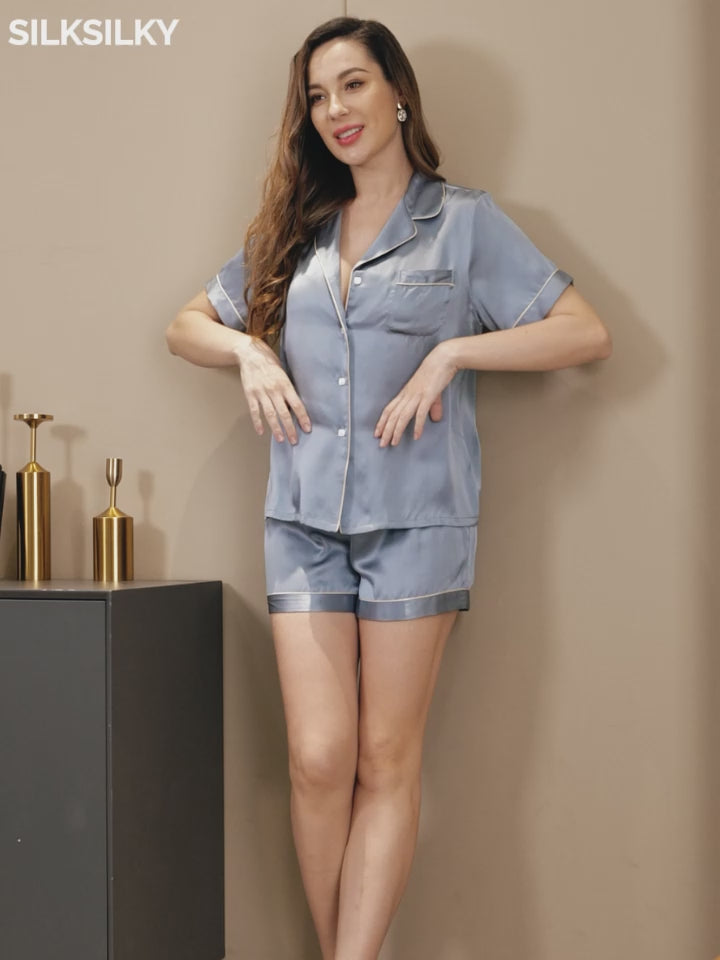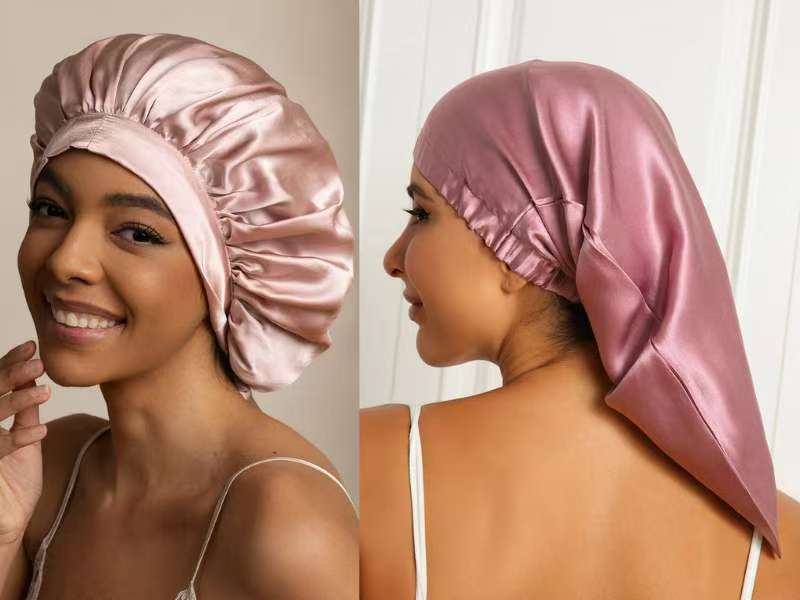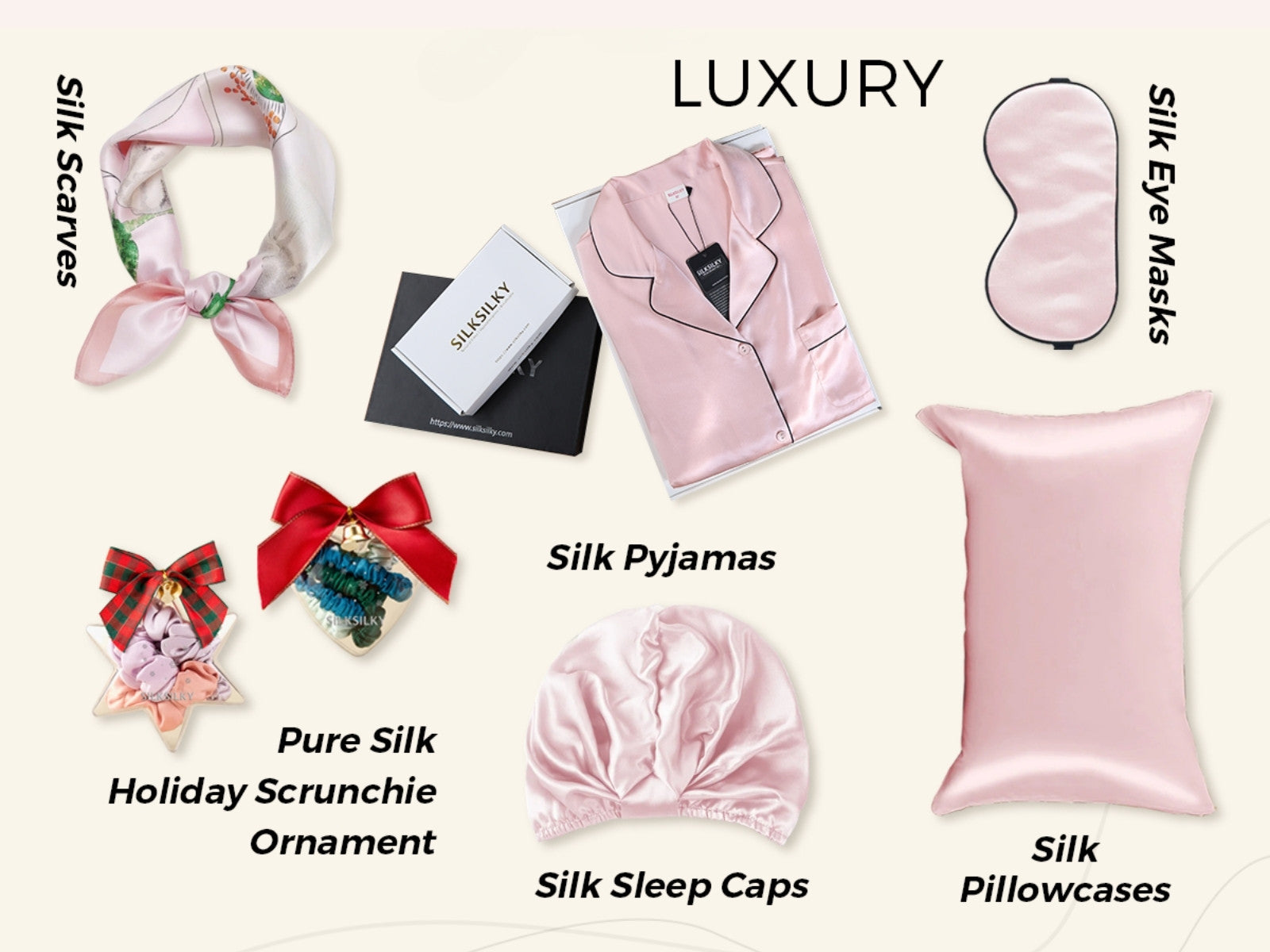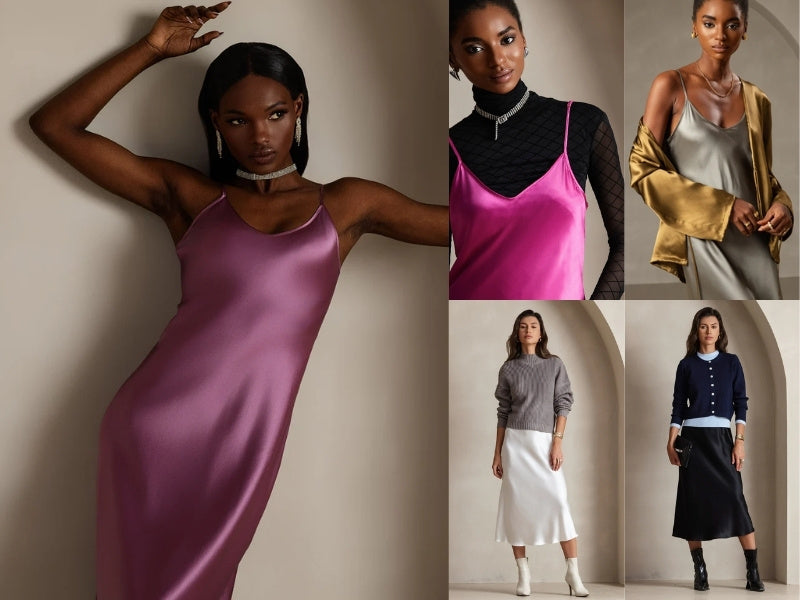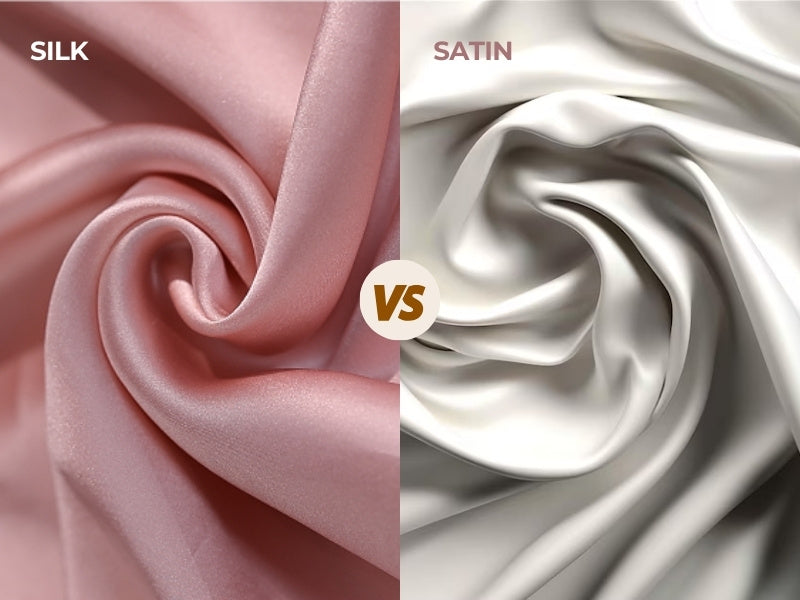An Ultimate Guide to Silk Nightwear
Table of Contents
- Where Did Silk Come From and Why Has It Stayed So Popular?
- How Is Silk Made and What Makes It Special for Nightwear?
- What Types of Silk Are Best for Nightwear?
- Why Choose Silk for Nightwear?
- What Are the Common Styles of Silk Nightwear?
- How to Choose the Right Silk Nightwear
- How to Care for Silk Nightwear
- Silk Nightwear Can Be Your Everyday Luxury
Silk nightwear has always been linked to comfort, elegance, and a touch of quiet luxury. From ancient dynasties to today’s bedroom wardrobes, silk remains one of the most cherished materials for sleepwear. Its soft texture, gentle touch on the skin, and natural ability to keep you cool or warm make it a favorite for restful nights. To truly enjoy what silk has to offer, it helps to know where it comes from, how it’s made, and what to look for when choosing the right piece.
Where Did Silk Come From and Why Has It Stayed So Popular?
Silk was originally created in ancient China more than 5,000 years ago. Legend has it that Empress Leizu made the discovery when a cocoon of the silkworm dropped into her tea. She noticed how the fine filament unraveled and the Chinese began to cultivate silkworms and spin the fine fiber into fabric. Silk was used exclusively by Chinese royalty and nobility for centuries and the secrets of its production were guarded.
As commerce grew, silk was one of the most expensive commodities on the Silk Road, extending even to Europe and the Middle East. It represented beauty, wealth, and power. Later, other parts of the world discovered how to cultivate silk, and the fabric became progressively more available to broader cross-sections of society. Silk retains an aura of subtle luxury today. In sleepwear, bedding, or clothing, it is still valued for softness, luster, and enduring beauty.
How Is Silk Made and What Makes It Special for Nightwear?
Silk is effortless and light, yet its production is painstakingly careful. It starts from small silkworms and ends as a lustrous, smooth fabric. Knowing how silk is produced can go a long way toward describing why silk is so soft, why it survives, and why genuine silk costs more than artificial silk. Here is how it is all put together—and what to look out for when shopping for silk sleepwear.

It Starts with Silkworms and Careful Harvesting
The silk-making process begins with a practice called sericulture. Silkworms are raised on a diet of mulberry leaves. When they spin cocoons, each one holds a long, single thread of raw silk. Once the cocoon is ready, it’s gently boiled or steamed to loosen the fibers. This step allows workers to unwind the thread without breaking it, which is what gives silk its famous strength and smooth texture.
Spinning and Weaving Create the Final Fabric
After harvesting, the raw silk threads are twisted together and spun into yarn. Then the yarn is woven into fabric using different patterns, depending on the final use. For nightwear, the weaving technique plays a big role in how the fabric looks and feels.
Weaving Styles Used in Silk Nightwear
- Charmeuse: Known for its shiny front and matte back, charmeuse is a top choice for luxury sleepwear. It drapes beautifully and feels ultra-smooth on the skin.
- Satin Weave: While satin refers to the weave and not the fiber, silk satin is glossy, soft, and elegant. This is a common point of confusion, but understanding the difference is crucial when shopping for genuine silk. It’s often used for slips and gowns.
- Crepe: This has a slightly textured surface with a soft matte finish. It’s less shiny than satin but still feels refined and breathable.
What’s the Difference Between Natural and Artificial Silk?
- Natural Silk: This includes mulberry silk, tussah silk, and other varieties made from real silkworm cocoons. It’s breathable, gentle on the skin, and regulates temperature well.
- Artificial Silk: Fabrics like polyester satin or rayon can mimic the look of silk but don’t offer the same comfort. They can trap heat, irritate sensitive skin, and don’t last as long. While they might look similar at first glance, learning to spot the differences is key to investing in a quality piece.
Natural silk is always the better option for nightwear if softness, skin-friendliness, and breathability matter to you.
What Types of Silk Are Best for Nightwear?
Not all silk feels the same. Depending on how it’s made and where it comes from, each type of silk has its own texture, weight, and look. Some are soft and airy, others smooth and rich. Knowing the differences can help you pick the right style for your comfort and taste. Below are the most common types of silk used in nightwear, and what each one is best for.
Mulberry Silk
Made from silkworms that eat only mulberry leaves, this is the highest quality silk you can buy. It’s strong, smooth, and naturally white, which makes it easy to dye. Because it’s soft on the skin and holds up well over time, mulberry silk is a favorite for high-end pajamas and robes.

Tussah Silk
Tussah silk comes from wild silkworms that feed on a variety of plants. It’s coarser than mulberry silk and usually has a natural beige or honey color. This makes it ideal for eco-style loungewear or relaxed-fit nightwear where a slightly rustic feel is welcome.
Charmeuse Silk
Charmeuse has a shiny front and a dull back, giving it a sleek, luxurious look. It feels light but has a fluid drape, which makes it perfect for slips, camisoles, and more fitted silk nightwear. It’s often used in pieces designed to feel both elegant and sensual.
Habotai Silk
Often called “China silk,” habotai is soft, thin, and lightweight. It doesn’t have the high gloss of charmeuse, but it feels smooth and airy on the skin. That’s why it’s often used for summer nightgowns or as a lining fabric in layered sleepwear.
Silk Satin
Silk satin refers to a weave that creates a high-gloss finish, typically used in elegant or bridal nightwear. It feels slippery to the touch and looks especially polished. Because of its shine and drape, silk satin is a popular choice for fancy robes, matching sets, and bridal sleepwear.
Why Choose Silk for Nightwear?
Silk nightwear isn’t just about looks—it also brings real comfort and care to your sleep. The fabric is naturally soft, breathable, and kind to your skin. It helps your body rest better and lasts longer than many other materials. Here are the main reasons silk is a smart choice for sleepwear.
- Gentle on Skin and Hypoallergenic: Silk is soft enough for even the most sensitive skin. It doesn’t rub or irritate like rough fabrics can. Because it’s a natural material, silk resists dust mites, mold, and other common allergens. This makes it a good option for people with allergies or skin conditions like eczema.
- Helps Regulate Body Temperature: Silk is breathable, meaning it lets air pass through instead of trapping heat. It stays cool during warm nights and holds warmth when it’s chilly. This keeps your body at a steady, comfortable temperature all year long—no need to swap out your sleepwear every season.
- Supports Better Sleep Quality: The smooth texture of silk helps reduce friction as you move in bed. That means less tugging on your skin and hair, and fewer sleep disruptions. The light weight and fluid drape of silk also feel calming, which can help you relax faster and sleep more deeply.
- Keeps Its Beauty Over Time: Silk nightwear looks luxurious, but it’s also surprisingly strong. High-quality silk, like mulberry silk, doesn’t break down easily and keeps its shape and shine for years with the right care. It’s an investment in comfort and style that holds up night after night.
What Are the Common Styles of Silk Nightwear?
Silk pajamas come in several different styles to accommodate different comfort levels, body types, and seasons. Whether full coverage or light, there is a silk type that will look as wonderful as it feels. The following is the classification of the most popular styles you'll find, and why each one is a standout.
1. Silk Pajama Sets
A pajama set made of silk usually has a button-down top and loose-fitting, full-length bottoms or shorts. The top may feature a collar and chest pocket, with the bottoms featuring an elastic or drawstring waist. The sets make a great night-time wear or a relaxed morning tea time. Go for ones with piped edges or contrasting trims for a neater, hotel-inspired appearance.

2. Silk Nightgowns
Silk nightgowns fall between the ankle and thigh. They are either sleeveless or short-sleeved, perfect for warm summer nights or individuals who like to wear a light sleeping gown. Others have lace trim, but others employ clean lines and minimal seams to keep the fabric light next to the body.

3. Silk Robes and Kimonos
Silk robes are a popular choice for sleeping over pajamas or straight out of the shower. They typically feature a waist sash and a loose sleeve. Kimono robes are more relaxed-fitting with dropped shoulders and a loose belt for lounging or morning preparation. Charmeuse silk robes have a beautiful drape and shimmer that can make anyone look glamorous and upscale from the moment they slip it on.

4. Silk Camisole Sets
They're usually a silk camisole top with coordinating shorts.Silk camisole sets are lightweight and versatile, often slept in and layered beneath loungewear. The straps are adjustable and there's soft contouring at the bust to keep the top from rising up. Some include lace trimming or side slits for additional movement and breathability.

5. Silk Slips
A silk slip is a body-fitting straight dress with a skimpy fit over the body, typically thin straps and a V-neck. It is handy for the bed but can be utilized as a layering piece under sheer gowns or bigger knits. Silk slips from charmeuse or satin-weave silk possess a fluid, non-cling drape that is without clinging.

6. Silk Boxer Shorts and Loungewear
For a casual yet sophisticated option, wide-leg lounge pants or silk boxers allow for freedom of movement and comfort throughout the day. These are generally accompanied by coordinating silk tees or tank tops and are a favorite among people who appreciate a combination of sophistication and comfort. Despite often being overlooked, silk boxers also make for an acceptable under-the-robe or oversized shirt fashion for a pulled-together yet casual night look.

Each of these styles can suit different preferences, climates, and body types. Whether you're choosing your first silk piece or expanding your collection, knowing these options makes it easier to find one that fits both your style and comfort needs.
How to Choose the Right Silk Nightwear
Silk pajamas are a luxury—both in feel and durability. Not all silks are created equal, however, and small variations can have a significant effect on comfort, upkeep, and value. Whether you're shopping for yourself or looking for a considerate gift, these guidelines can help you shop smart.
1. Check the Silk Grade
Silk is quality-graded from Grade C ( lowest) to Grade 6A (highest). Luxury nightwear typically employs 6A-grade long-fibered, smooth, and durable mulberry silk. Brands tend to mention the grade in product information—if not, it is worth inquiring. High-grade silk will be smoother to the touch, less likely to lose color, and will not pill or break down rapidly.
2. Look for the Right Momme Weight
“Momme” (mm) measures the weight of silk, similar to thread count in cotton. For nightwear, 16 to 22 momme is ideal.
- 16–19 momme: Lightweight, cooler, and more breathable—great for summer slips and cami sets.
- 22 momme: Slightly thicker, more durable, and luxurious—better for pajama sets and robes.
Higher momme silk usually costs more but lasts longer and resists tearing.
3. Think About Fit and Cut
Silk will drape softly over the body, instead of clinging to it. Opt for loose-fitting designs that provide freedom of movement, particularly sleeping positions. If you are petite or curvy, seek out adjustable or elasticized waists for a more comfortable fit. Wrap robes and slips that are cut on the bias are becoming on a number of body types.
4. Match Style to Season and Use
Pick your nightwear style based on when and how you’ll wear it:
- For warm nights or travel: Lightweight camisoles, boxer shorts, or short nightgowns keep you cool.
- For cooler months: Long-sleeved pajama sets or full-length robes add comfort and warmth.
- For daily use: Washable charmeuse sets with simple shapes are easiest to maintain.
- For special occasions: Look for satin finishes, lace trims, or coordinated robe sets.
5. Choose Color and Design with Purpose
Silk takes dye beautifully, so the color options are wide. Choose:
- Neutrals (like ivory, gray, or navy) for timeless style
- Soft tones (like blush or champagne) for bridal or gifting
- Bold colors or prints for personal expression
Also think about practical design: are there pockets, adjustable ties, or seams that sit comfortably when lying down?
6. Balance Budget and Quality
Good silk isn’t cheap, but you don’t need a full drawer to enjoy it.
- Splurge on one or two high-quality staples, like a mulberry silk robe or pajama set in 19–22 momme.
- Save on accessories like sleep masks, or simpler items made with lower momme silk for summer wear.
Investing in fewer, better pieces often brings more long-term comfort—and fewer regrets.
How to Care for Silk Nightwear
Silk is delicate but lasts a long time with the right care. Here’s how to keep your silk pieces soft, smooth, and looking their best:
- Washing: Hand wash in cold water or use a delicate machine cycle. Always use a silk-safe detergent—no bleach or strong cleaners.
- Drying: Lay flat to air dry in the shade. Avoid wringing or direct sunlight, which can damage fibers and fade color.
- Storing: Fold loosely and store in a breathable cotton bag or drawer—never plastic. This helps prevent moisture buildup and fabric yellowing.
- Ironing: Use a low heat setting and iron on the reverse side while slightly damp.
- Avoid: Tumble dryers, rough detergents, and fabric softeners. These can weaken the fibers and reduce shine.
With just a little care, your silk nightwear can stay beautiful for years.
Silk Nightwear Can Be Your Everyday Luxury
Sleeping in silk doesn’t have to be a special-occasion thing. With the right pick, it can be part of your everyday comfort. From pajama sets to robes, silk nightwear has something for everyone—and it holds up beautifully with simple care. If you’ve been curious, now’s a good time to try just one set. Your skin (and sleep) will thank you.
![[Light Blue] SilkSilky Pure Silk Notch Collar Women's Pajamas 001,](http://silksilky.com/cdn/shop/files/ab83afb9301666ee2f174a8ae72ffda4_4e9bb488-7880-40fe-9e69-f0fd823857c5.jpg?v=1764653199&width=1200)
![[Light Blue] SilkSilky Pure Silk Notch Collar Women's Pajamas 002,](http://silksilky.com/cdn/shop/files/db8dbeee5354fe3b631b963715847ffe.jpg?v=1764653202&width=1200)
![[Dark Red] SilkSilky Pure Silk Notch Collar Women's Pajamas 001,](http://silksilky.com/cdn/shop/files/599ed0811e1a5fcfa55bdc80a0279704_2643c850-a793-4475-a52b-7fef1bbd7e36.jpg?v=1762233837&width=1200)
![[Dark Red] SilkSilky Pure Silk Notch Collar Women's Pajamas 002,](http://silksilky.com/cdn/shop/files/9e022d4dd4f99aed4af8da3f58fcfd5b_efb9bafe-3d71-4283-9b81-e339ff08f352.jpg?v=1762233837&width=1200)
![[White] SilkSilky Pure Silk V Neck Nightgown 001,](http://silksilky.com/cdn/shop/files/a8ae95260a57844b1e2e00c4fcfabdcc_b922b270-af10-4e96-9493-0d877bd663db.jpg?v=1764140639&width=1200)
![[White] SilkSilky Pure Silk V Neck Nightgown 002,](http://silksilky.com/cdn/shop/files/24ac506750f8c38c51bb5b6d0ee15287.jpg?v=1764140639&width=1200)
![[Pink] SilkSilky Pure Silk Sleep Cap 001,](http://silksilky.com/cdn/shop/files/SilkSilky_Pure_Silk_Sleep_Cap_Pink_001_C-250529006.jpg?v=1762221980&width=1200)
![[Pink] SilkSilky Pure Silk Sleep Cap 002,](http://silksilky.com/cdn/shop/files/SilkSilky_Pure_Silk_Sleep_Cap_Pink_002_C-250529006.jpg?v=1762221980&width=1200)
![[Steel Blue] SilkSilky Pure Silk Notch Collar Women's Pajamas 001,](http://silksilky.com/cdn/shop/files/05b358f92fb5d252122b00d69a2fcfc5_88211a42-88c4-4448-8cb3-5f18529bfef8.jpg?v=1762237226&width=1200)
